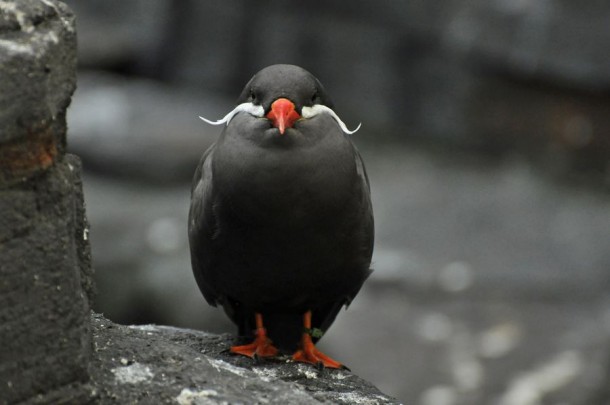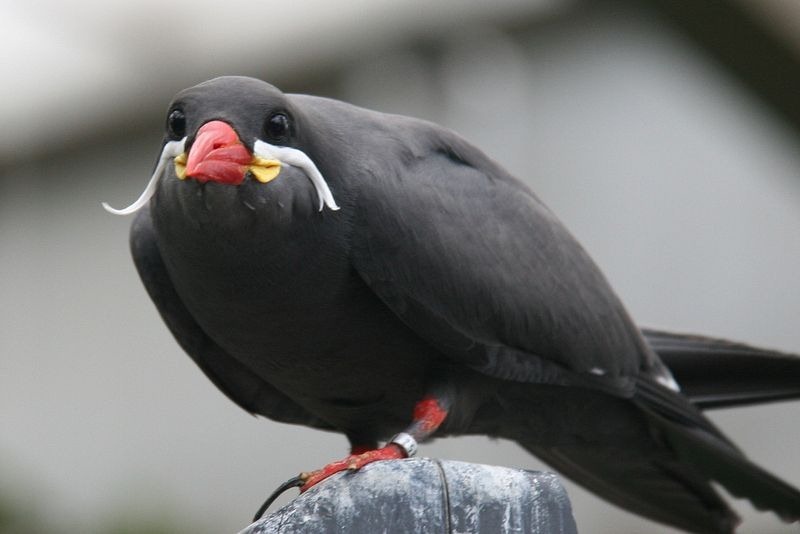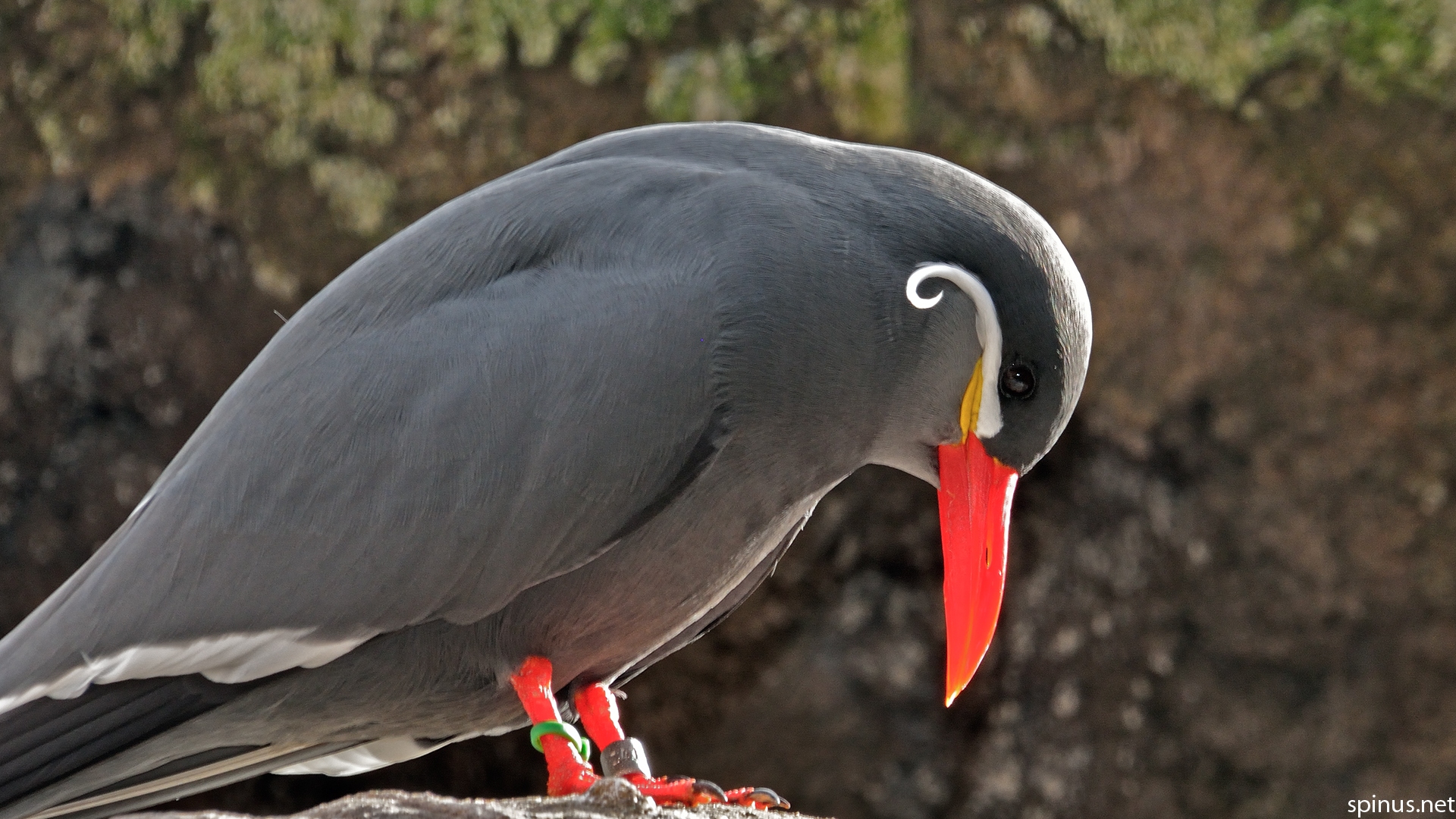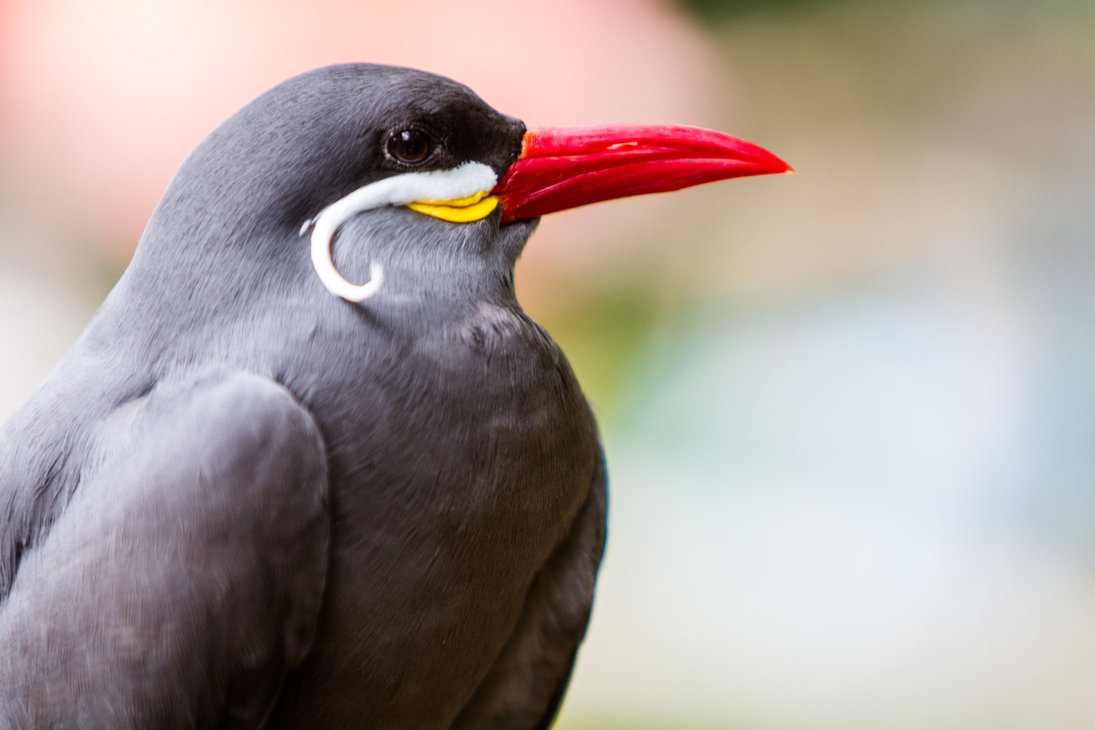The Inca Tern: Beautifully Ornate
The terns are a successful group. Often sharing the same space as gulls, they are generally smaller but similar in colour and shading; they’re a handsome bunch of birds.
As with most monogamous birds, the males and females are difficult to tell apart and their long forked tails have earned some terns the title – sea swallow.
The arctic tern is the most famous of the terns, she hogs the limelight due to the ridiculous lengths she goes to each year. Arctic terns complete the longest migration of any species on earth. Individuals which live in Iceland and Greenland migrate from their northerly homes all the way south, crossing the equator and continuing right down to Antarctica. A yearly round trip of 70,900 km (44,100 mi). Over a lifespan of 34 years, they can fly more than 1.25 million miles – to the moon and back 3 times.
Like this:
But we’re not talking about those guys today. I want to introduce you to the Inca tern (Larosterna inca), a very proud looking gentleman. As Wikipedia says, the Inca terns are “uniquely plumaged;” another bird site refers to their head as “superb and strange” – both adequate descriptions.
Inca terns are the only member of the genus Larosterna.
They spend their lives in Peru and Chile and every so often, Ecuador. As terns go, Inca terns are pretty large (40 cm / 200 g), but it’s not their size that makes them stand out from the crowd.
Like most terns, they breed in rocky regions near the coast; they feed themselves and their chicks primarily by plunge diving for fish. However, they are often seen in the vicinity of large sea mammals who they like to steal food from if they get half a chance.
Researchers believe that these guys are quite severely effected by El Niño Southern Oscillations (random, but periodic fluctuations in wind and sea temperatures), but they seem to recover fairly well afterwards. It’s thought that they disperse and regroup once things have quietened down.
Although experts believe that the Inca tern population has declined over the years, there’s still estimated to be around 150,000 individuals.
Their main threats are humans farming guano (dirty, dirty) and rats and cats that are introduced to areas where they nest on the ground. However, the Inca tern is resourceful and quick to change habits when challenges arrive. He is as robust as he is grand.
If you are interested in listening to the sounds that they make, you can hear some here.
MORE MOUSTACHES:
NATIONAL BEARD AND MOUSTACHE COMPETITION






















